"The Landlady" and Other Short Stories
By roald dahl, "the landlady" and other short stories summary and analysis of "lamb to the slaughter".
Six-months-pregnant Mary Maloney sits in her home with the curtains drawn as she waits for her husband, Patrick, to come home from work. She calmly looks at the clock, and at 10 minutes to 5, his car pulls into the driveway and she leans in to kiss him as he comes to the door. She hangs his coat, and makes them drinks. This is a blissful time of day for Mary, and she waits quietly by her husband while he finishes his drink. Mary really loves her husband and enjoys basking in his warmth "as a sunbather feels the sun" (404).
Mary asks her husband if he is tired, and he downs his whiskey soda, which is very unusual for him. Her husband stands up to get another drink, but Mary jumps up and asks to bring it to him. Her husband tells her to sit down, and when he returns she notices the drink is filled with significantly more whiskey. Mary comments on how her husband should not be on his feet all day given how senior of a policeman he is, and her husband does not respond. Mary's husband continues to sit in silence as she tells him she can make him dinner, even though they usually go out to eat on Thursdays. He does not respond, so Mary insists that her husband must eat something until he tells her to sit down.
When her husband sits her down, Mary sees him sitting motionlessly, shrouded by a shadow, as he tells her that he is going to leave her. Mary watches him with a "dazed horror" (405), and her husband tells Mary not to make a fuss about the divorce, as it would be bad for his job.
After hearing this, Mary walks down the stairs to the cellar and lifts the first object she grabs, a leg of lamb, from the freezer. She decides to make lamb for dinner as she holds the lamb by the thin bone-end. Since he is going out, her husband tells her not to bother making dinner. In response, Mary walks up behind him, swings the leg of lamb, and brings it down onto the back of his head.
Her husband remains standing for four or five seconds, then falls to the carpet, dead. She snaps out of shock and thinks clearly about her next steps. Mary initially decides the penalty for killing her husband would be a relief. But, she worries about her unborn child, and whether they would kill both her and her child or wait until the child was born.
Mary carries the meat into the oven and begins to cook it. She then begins to tidy up her face and smile strangely at the mirror. After rehearsing in the mirror, Mary smiles and speaks more naturally, and she goes to the grocery store to buy some potatoes and peas. At the grocery store, Mary lies to the cashier that she and her husband decided to eat in.
Returning from the grocery store with potatoes, peas and cheesecake, Mary decides to make supper as she usually would, and to make it as tasty as possible. Mary's plot is to tell the police her husband is murdered while she is buying vegetables, and she finds his body when she returns home. Mary plans to keep her actions as natural as possible, and even calls to her husband as she walks through the door with the groceries. As she is acting out her plan, she truly feels the shock of his death, and she begins crying over his dead body. Mary then calls the police to report her husband's murder, and the police car arrives at her home.
Two policemen from the precinct walk into her home, and she knows both of them. She falls into one of the policemen's arms, weeping hysterically, and he gently puts her in a chair. Mary tells the policemen about her visit to the grocer, and after one of the policemen finds a small patch of blood on Patrick's head, more men come into her home. A doctor and two detectives examine the body and the crime scene.
Eventually, the photographer and doctor leave, and two other men carry Patrick's body out on a stretcher. Mary asks to stay in the house while the two policemen search her home, and they tell her that her husband was killed by a heavy blunt object, most likely a large piece of metal. The policemen continue to search her home for the murder weapon, and Mary offers them whiskey.
One of the police officers remarks that Mary still has lamb in the oven, and Mary persuades the policemen to have the lamb for dinner. The story ends with the policemen discussing the murder weapon that it is likely "right under" their noses, as they eat the leg of lamb.
In "Lamb to the Slaughter," the tranquility of Mary's home life as a doting wife and soon-to-be mother is destroyed by her husband's wish to divorce her. The beginning of this story sets up her complete servility. Indeed, she is given no interests or thoughts outside of caring for her husband and waiting for him to arrive, as she notices every move her husband makes. When her husband unsettles their marriage by asking for a divorce, he also unsettles Mary's stability, shattering her internal life and beginning her transformation into a murderer.
As Mary's husband tells her that he is going to leave her, Mary acutely observes several changes in his usual demeanor. Like a predator, Mary observes that he downs his drink too quickly. Mary does not see this, but hears it, as the ice clinks in his glass. She then notices "the light from the lamp beside him [falling] across the upper part of his face, leaving the chin and mouth in the shadow" (405). This light casts her husband ominously, as the darkness around his mouth foreshadows his impending dark confession as he unravels the stability of their marriage.
Indeed, Mary changes instantaneously, as her movements become "automatic" (406) while she walks down to the freezer, picks out the leg of lamb, and kills her husband with it. Murdering her husband only requires one precise blow, and Mary's transformation from docile wife to calculating murderer is immediate. Mary's previous daze is replaced by a feeling of "cold and surprise," and a mental clarity that allows her to think quickly. The shift into cold and surprise symbolizes Mary's rebirth as a calculating killer, as Mary devises a plot to clear herself of any suspicion.
After the beginning of the story establishes Mary as someone whose only thought is to care for her husband, her inability to access emotion naturally after her murder, to the extent that she must practice her expressions in the mirror, shows her external and internal transformation. Her husband's ill-treatment of her, and the revenge that she exacts, change her immensely. As Mary returns to her home and calls the police, she reassures herself that she does not have to act. But this repetitive thought casts doubt on Mary's credibility: can she really still lament her husband's death after murdering him? Mary tells herself to "do everything right and natural" (408) so she will not need to act, as she pretends to be the faithful wife that she was before the murder.
Mary's final murderous act, her decision to feed the detectives the leg of lamb that she used to kill her husband, shows the extent of Mary's depravity. But, this act also displays a reaffirmation of power. After devoting herself to her husband patiently, she is dumped by him while she is six months pregnant. Her servility to her husband is upturned when she kills him with the dinner she planned to make him, as she vengefully murders her husband after he metaphorically kills their marriage. This act, though insidious, allows her to break from her obedience. When she feeds the police officers the murder weapon, she again unsettles the expectation that she will be a good wife. Indeed, her act of hospitality, an expectation from a good housewife, is instead an act of exoneration, as she removes the evidence and any chance that she will be convicted. Mary feeds her rebellion and revenge directly to the detectives, as they unknowingly consume Mary's disruption of her expected domestic and gender roles.


“The Landlady” and Other Short Stories Questions and Answers
The Question and Answer section for “The Landlady” and Other Short Stories is a great resource to ask questions, find answers, and discuss the novel.
Which quote from paragraph 12 best support the answer to Part A?
Possible Answer: "forcing him to stay where he was and not walk away from that house". .. note, only is Part A is questioning the definition of another word. Please include all information in your posts.
In "Lamb to the Slaughter," what is a mistake Mary makes when establishing her alibi at the grocery store.
I suppose she establishes her alibi after she kills her husband.Before she left the house after hitting her husband over the head with the frozen leg of lamb, she put the leg of lamb in the oven to begin cooking. This however doesn't end up being...
The Landlady
The emphasis of conflict and sense of foreboding mystery all lies with the character of the landlady hence the title.
Study Guide for “The Landlady” and Other Short Stories
"The Landlady" and Other Short Stories study guide contains a biography of Roald Dahl, literature essays, quiz questions, major themes, characters, and a full summary and analysis.
- About "The Landlady" and Other Short Stories
- "The Landlady" and Other Short Stories Summary
- Character List
Essays for “The Landlady” and Other Short Stories
"The Landlady" and Other Short Stories essays are academic essays for citation. These papers were written primarily by students and provide critical analysis of "The Landlady" and Other Short Stories by Roald Dahl.
- A Rose for the Landlady: A Dissection of the Affections of the Dahl and Faulkner’s Macabre Murderesses
- The Landlady: An Enigma
- "Lamb to the Slaughter": Roald Dahl's Sacrificial Killing of Criminal Profiling
Lesson Plan for “The Landlady” and Other Short Stories
- About the Author
- Study Objectives
- Common Core Standards
- Introduction to "The Landlady" and Other Short Stories
- Relationship to Other Books
- Bringing in Technology
- Notes to the Teacher
- Related Links
- "The Landlady" and Other Short Stories Bibliography
Wikipedia Entries for “The Landlady” and Other Short Stories
- Introduction
- Short stories
- Collections
Lamb To The Slaughter
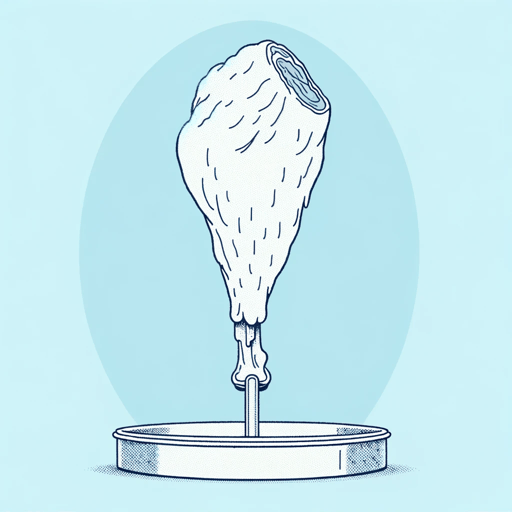
32 pages • 1 hour read
A modern alternative to SparkNotes and CliffsNotes, SuperSummary offers high-quality Study Guides with detailed chapter summaries and analysis of major themes, characters, and more.
Story Analysis
Character Analysis
Symbols & Motifs
Literary Devices
Important Quotes
Essay Topics
Discussion Questions
How does Dahl establish an atmosphere of domestic calm at the opening of the story? What clues does he give that the harmonious mood is soon to be shattered? Make reference to foreshadowing in your answer.
Describe the relationship between Mary and her husband. How does their marriage reflect the values of 1950s society? What is the author’s overall message about traditionally assigned gender roles?
What impression does the reader have of Mary Maloney at the beginning of “Lamb to the Slaughter”? How does that perception change as the story progresses? Cite evidence from the text to support your answer.

Don't Miss Out!
Access Study Guide Now
Related Titles
By Roald Dahl

Beware of the Dog
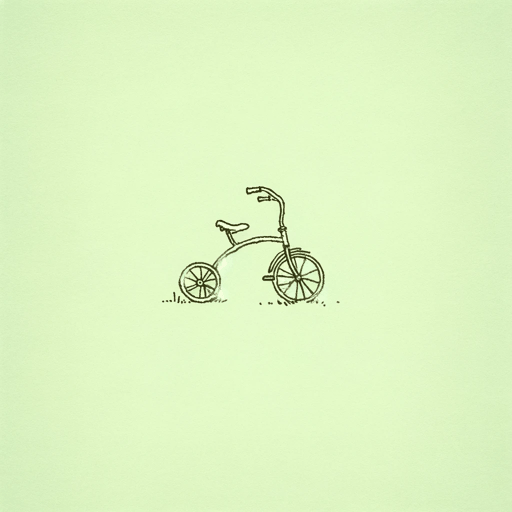
Boy: Tales of Childhood

Charlie And The Chocolate Factory

Charlie and the Great Glass Elevator
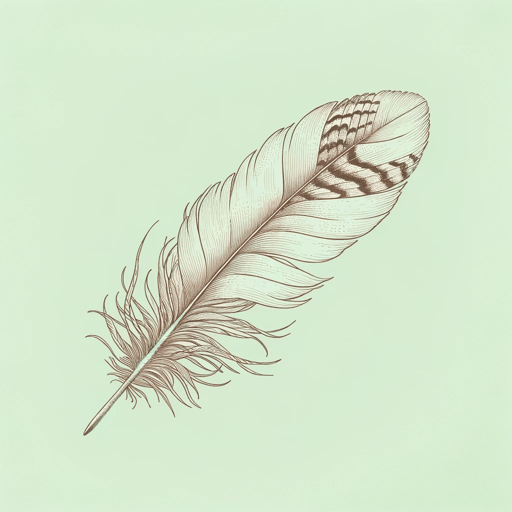
Danny, the Champion of the World
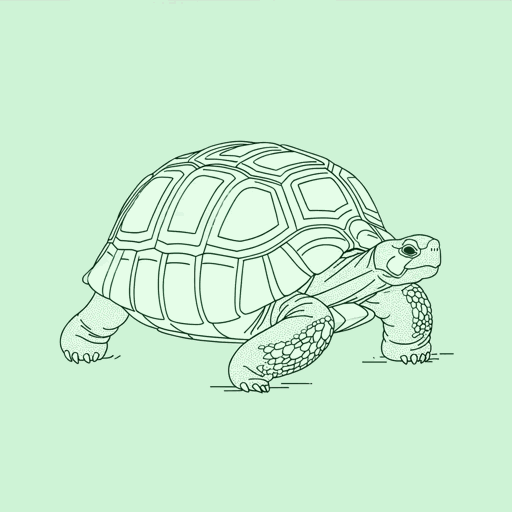
Fantastic Mr Fox

George's Marvelous Medicine
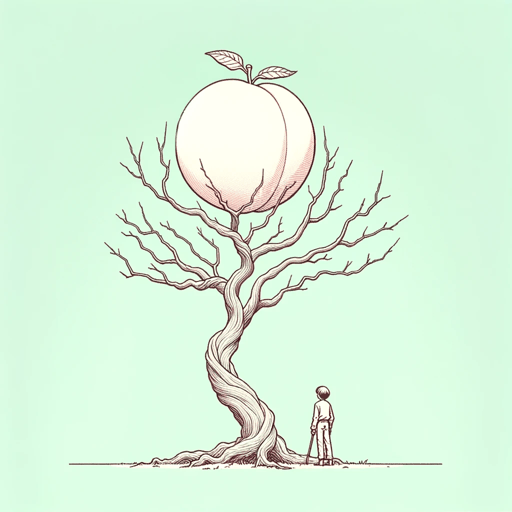
James And The Giant Peach

The Giraffe and the Pelly and Me
Roald Dahl, Illustr. Quentin Blake

The Landlady
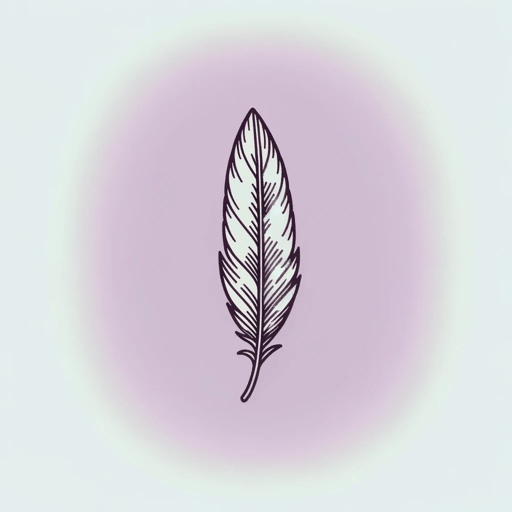
The Magic Finger
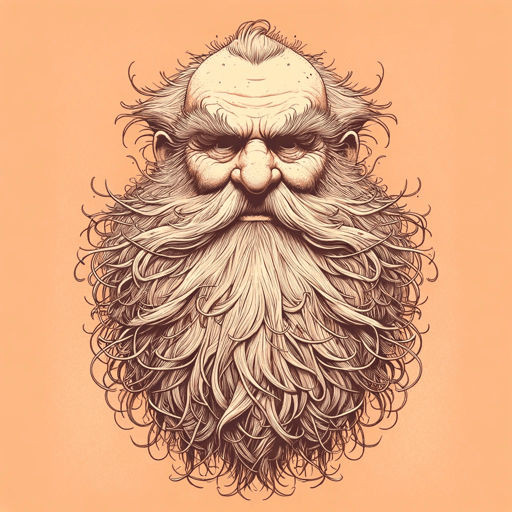
The Way Up To Heaven
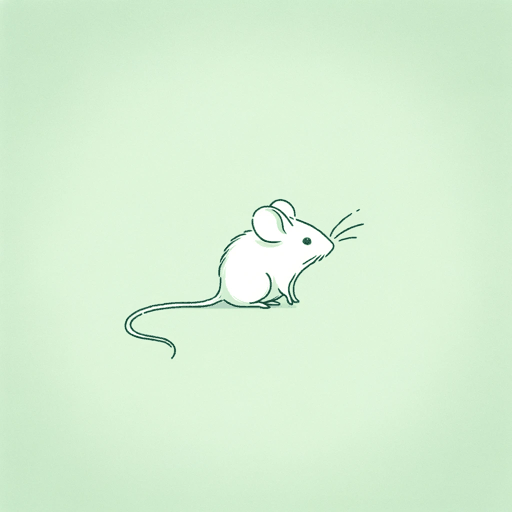
The Witches
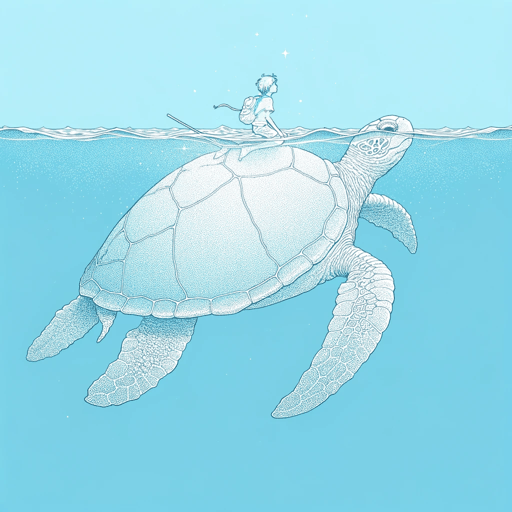
The Wonderful Story of Henry Sugar and Six More
Featured Collections
Loyalty & Betrayal
View Collection
Lamb to the Slaughter: Movie vs. Book
Lamb to the slaughter: essay introduction, lamb to the slaughter: essay main body, lamb to the slaughter movie vs. book: essay conclusion, works cited.
Mood is the general feeling that develops in the audience after reading, listening to or watching a piece of literature. Usually, it is brought forth by the actions and words of the characters; the style of narration used, the writer’s choice of words and intonation. This paper analyzes two pieces of literature that tell the same story, Roald Dahl’s short story and Alfred Hitchcock’s movie. Both works share the title “Lamb to the Slaughter”.
In this analysis, it is clear that mood in the two pieces of literature is enhanced by the characters and how they act and speak, the manner in which the author advances the plot and the use of suspense. Both works keep the audience wanting to know what the next action will be, and this happens from the beginning to the end. In addition, every character’s actions are very unpredictable. The plots of both stories are also extraordinary since there is tension from the beginning of the story to the end. Therefore, these three factors in both pieces of literature combine to create a curious mood as the audience is anxious to know what actions the characters will take next.
The first element that leads to the curious mood in both versions of the story is the plot used in each of them. Both plots are abnormal since they contain tension at the beginning, and it dominates the story lines to the end. Such a plot is extraordinary because the audience is used to a plot whose exposition is dominated by peace and co-existence. This conventional is, usually, followed by the rising action before the crisis and finally the denouement.
This is not the case with both plots in the two versions of “Lamb to the Slaughter”. They both start when Patrick is not happy with his wife, Mary. In fact he directly introduces the conflict. In the movie, he says, “I want to leave you” while in the story, the narrator does not quote the words he uses, but simply says, “And he told her” (Dahl n.pag.). This type of plot is not ordinary. As such, it keeps the audience curious to know what will happen next. For example, when the conflict is introduced at the beginning of the story, the audience cannot predict whether the next thing to happen will be the rising action or the falling action.
Apart from the structure of the plot, both pieces of work also use extensive suspense. Suspense creates curiosity in the audience since it makes them anticipate more conflict. In the short story, for example, readers curiously wait to know what Patrick will tell Mary when he says: “This is going to be a bit of a shock to you, I’m afraid,” he said. “But I’ve thought about it a good deal and I’ve decided the only thing to do is tell you right away. I hope you won’t blame me too much.” (Dahl n.pag.). Another incident that creates curiosity is when Mary says: “I’ll get the supper” (Dahl n.pag.). This creates suspense since it is hard to predict whether Patrick will eat or not because he has already told Mary not to make supper for him. Suspense is also created when the narrator describes Mary’s movement when she comes from downstairs with the lamb:
When she walked across the room she couldn’t feel her feet touching the floor. She couldn’t feel anything at all- except a slight nausea and a desire to vomit. Everything was automatic now-down the steps to the cellar, the light switch, the deep freeze, the hand inside the cabinet taking hold of the first object it met. She lifted it out, and looked at it. It was wrapped in paper, so she took off the paper and looked at it again (Dahl n.pag.).
This description makes the reader curious to know what will happen next. The same happens in the movie. For example, when Mary swears not to let Patrick go, the audience becomes curious to know what she will do to prevent him from going (Hitchcock n.pag.). There is even more curiosity when Patrick dares her to try and stop her from going. More suspense in the movie is evident when Mary kills her husband (Hitchcock n.pag.). The audience is left guessing what her next action will be. They do not know whether she will run away, give herself up to the police or just sit and wait. Even at the end of the story, it is not clear whether the police will end their speculations by pointing her as her husband’s murderer or not. This dominant suspense in both renditions of the story creates a curious mood in the audiences of both storylines.
The last element responsible for the creation of the curious mood in both storylines is the behavior of the characters. They all behave in a manner that raises curiosity in the reader. For example, in both stories, Mary seems very restless as she waits for her husband to come back home. In the movie, she pretends to be very busy, but looks at the door every time to see whether the husband is coming or not. She rushes very fast to look at the door when her husband comes home (Hitchcock n.pag.). This restlessness in her creates a lot of curiosity in the audience. In the short story, she is also very restless:
Now and again she would glance up at the clock, but without anxiety, merely to please herself with the thought that each minute gone by made it nearer the time when he would come. There was a slow smiling air about her, and about everything she did. The drop of a head as she bent over her sewing was curiously tranquil. Her skin -for this was her sixth month with child-had acquired a wonderful translucent quality, the mouth was soft, and the eyes, with their new placid look, seemed larger darker than before. When the clock said ten minutes to five, she began to listen, and a few moments later, punctually as always, she heard the tires on the gravel outside, and the car door slamming, the footsteps passing the window, the key turning in the lock. She laid aside her sewing, stood up, and went forward to kiss him as he came in (Dahl n.pag.).
Mr. Maloney’s behavior also causes a curious mood in the audience. He enters the house looking troubled. In the movie, he unwillingly replies his wife’s greetings and goes straight to prepare a glass of wine for himself. He does not pay much attention to what his wife tells him (Hitchcock n.pag.). The audience is likely to be curious about what troubles Mr. Maloney. In the short story, he does an unusual thing, draining his glass with a single gulp: “he did an unusual thing.
He lifted his glass and drained it in one swallow although there was still half of it, at least half of it left. She wasn’t really watching him, but she knew what he had done because she heard the ice cubes falling back against the bottom of the empty glass when he lowered his arm” (Dahl n.pag.). The audience is also likely to be curious about what troubles Mr. Maloney. They may be interested in knowing why he gallops his drink instead of taking his time as he always does.
The detectives also cause curiosity in both the movie and short story through the questions they ask Mrs. Maloney. At some point, they sound as if they are sure that she killed her husband: “There was a great deal of whispering and muttering beside the corpse, and the detectives kept asking her a lot of questions” (Dahl n.pag.). Asking many questions makes the audience curious to know whether the detectives will realize that she is responsible for killing her husband or not.
In conclusion, the mood in both renditions of “Lamb to the Slaughter” is a curious one. Both pieces of literature keep the audience curious about all the events from the beginning to the end. They successfully achieve this through the characters used, the nature of their plots and the dominant stylistic device, suspense. Both of them effectively use these elements of literature in ensuring that their audiences’ curiosity is maintained from the beginning to the end.
Dahl, Roald. n.d. Lamb to the Slaughter . Web.
Hitchcock, Alfred. “Alfred Hitchcock Presents Lamb to the Slaughter”. Online video clip. Schooltube . 2011. Web.
- Chicago (A-D)
- Chicago (N-B)
IvyPanda. (2020, June 25). Lamb to the Slaughter: Movie vs. Book. https://ivypanda.com/essays/short-story-and-movie-comparison-lamb-to-the-slaughter/
"Lamb to the Slaughter: Movie vs. Book." IvyPanda , 25 June 2020, ivypanda.com/essays/short-story-and-movie-comparison-lamb-to-the-slaughter/.
IvyPanda . (2020) 'Lamb to the Slaughter: Movie vs. Book'. 25 June.
IvyPanda . 2020. "Lamb to the Slaughter: Movie vs. Book." June 25, 2020. https://ivypanda.com/essays/short-story-and-movie-comparison-lamb-to-the-slaughter/.
1. IvyPanda . "Lamb to the Slaughter: Movie vs. Book." June 25, 2020. https://ivypanda.com/essays/short-story-and-movie-comparison-lamb-to-the-slaughter/.
Bibliography
IvyPanda . "Lamb to the Slaughter: Movie vs. Book." June 25, 2020. https://ivypanda.com/essays/short-story-and-movie-comparison-lamb-to-the-slaughter/.
- “The Tiger” and “The Lamb” Poems by William Blake
- Wordsworth's “Lines Written a Few Miles Above Tintern Abbey”, Blake's “The Lamb” and “The Tyger”
- William Blake' Poems Comparison: "The Lamb" and "The Tyger"
- The Drover’s Wife by Murray Bail and Henry Lawson Comparison
- "Giovanni’s Room" and "Native Speaker"
- "A Rose for Emily" and "The Snows of Kilimanjaro"
- "The Father" and "A Doll's House"
- "The Namesake" and "The Overcoat"

Lamb to the Slaughter
Ask litcharts ai: the answer to your questions.
Gender and Marriage
Throughout the short story, Mary Maloney is firmly situated in a patriarchal society—that is, a system in which men hold more power than women politically, socially, and economically. Historically, women have been often consigned to the private sphere of domestic life, as they were deemed by men to be intellectually and emotionally unfit for the public sphere outside of family and home life. Men, on the other hand, were able to move through both spheres…
Role Reversals
Dahl subjects his characters to various reversals in their traditional roles. Most prominent of these role reversals is that of Mary Maloney , whose act of murder defies the policemen’s assumptions about her and about the culprit. By physically attacking her husband, with a club-like weapon no less, Mary subverts gender stereotypes and takes on the traditionally male role of violent attacker and murderer. Her quick thinking and ability to deceive others causes the policemen…

Food/Consumption
Much of “Lamb to the Slaughter” is occupied with eating and food. At the beginning of the story, food is closely linked to domesticity and marriage. Mary ’s repeated attempts to feed Patrick demonstrate not only her affection for her husband but also the role she plays as homemaker and housewife. Similarly, Patrick’s refusal to eat Mary’s food is a rejection of that affection and foreshadows his rejection of the domestic life Mary has built…
Patrick ’s betrayal of his marriage drives the rest of the story’s plot, leading to both his wife’s betrayal and that of his colleagues. When he leaves his wife, Patrick betrays not only the love Mary has for him but also the unborn child she is carrying and their private domestic life together. At the sudden breakdown of her marriage and the world she built around Patrick, Mary commits her own betrayal by killing her…

Tracey Slaughter becomes first overseas winner of Calibre Essay Prize
In her newest published essay Why your hair is long and your stories short , award-winning author and University of Waikato senior lecturer Tracey Slaughter explores memories of her mother’s hairdressing salon, where she grew up. The essay has been awarded the prestigious Australian Book Review’s Calibre Essay Prize, a $10,000 honour that has never been given to an overseas writer before. Slaughter spoke to the Waikato Herald about the difficult journey behind her words.
Tracey Slaughter first learned about domestic violence sitting on the lino floors of her mother’s salon, watching hair drift down around her.
“It was a storytelling space,” Slaughter told the Waikato Herald .
“It’s where my fascination with stories came from. I did a lot of listening.”
Slaughter said the salon was a place of female community with a strong sense of support.
“It was also a dangerous place. I learned disturbing lessons about what it means to be a woman, in particular the story of domestic violence.
Discover more
- Sir David Levene essay competition winner: Breaking ...
- Winner of Irish essay competition
- Schoolgirl plans essay contest to raise understanding ...
“That was the story that I felt needed to be told in a truthful way.”
But it was also a story that almost never made it to the page.
“To just sit down and tell the story of domestic violence is heavy and when I had tried before, I failed,” Slaughter said.
“Domestic violence goes on being a traumatic truth in so many women’s lives.
“My early encounters with it and with its impact on female psychology - there were some lessons there that it’s taken me a long time to unwind.”
Then, after winning the Landfall Essay Prize in 2015, Slaughter’s writing began to take a different direction.
“When I gave myself permission to work in essay form rather than story mode, it really sprang to life,” Slaughter said.
“I wanted to dig into both the good things but also the harrowing realities of the past.
“It’s been a real journey.”
Then, once she had finished the piece, Slaughter wasn’t sure it was ready to be read by anyone else, let alone be entered into a prestigious overseas writing competition.
“I was just a hair’s breadth away from not sending it in.
“It was very unconventional, very fragmented, very personal. I thought my chances were near zero.”
Slaughter said she has never managed to look at her work from a distance.
“It’s quite extreme, the mind state I still get into. I wanted to send it in as an act of faith, to back myself.”
In the end, Slaughter’s risk paid off.
Her personal essay, Why your hair is long and your stories short, stood out against 567 entries from 28 countries to win first place in the Australian Book Review’s Calibre Essay Prize competition.
Slaughter is also the first overseas writer to be awarded the prize.
“I was absolutely astounded when I got the call that I was in the shortlist. That in itself was enough of a shock.”
Slaughter missed the first phone call announcing her win.
“They called while I was teaching. I saw the Australian number and thought, ‘What is this?’”
Slaughter called the number back.
“I was blown away,” Slaughter said.
“I just feel so blessed in that it feels like such a confirmation of the direction that my work is moving in.”
The Calibre Essay Prize was begun by the Australian Book Review in 2007 and has been open to overseas writers since 2015.
Now in its 18th year, the prize encourages writers of all kinds to explore one of the oldest forms in literature while its 5000-word limit and $10,000 prize set it apart from other essay writing competitions.
Australian Book Review editor and one of this year’s Calibre Prize judges Peter Ross said the response to Slaughter’s essay was “enthusiastic”.
“For me it is one of the finest essays in the history of the Calibre Prize,” Ross told the Waikato Herald.
“It is certainly the most innovative and lyrical.”
Ross said the essay deserved a wider New Zealand audience.
Judges Amy Bailieu, Shannon Burn and Beejay Silcox said in a joint statement that this year’s entries “delighted” them.
“Among them were essays exploring the ethics of AI and the repercussions of war, reflections on loss, climate change and family.”
The judges’ statement said Slaughter’s essay stood out because it was “sharp as good scissors”.
“A beauty salon becomes a refracting point for the dark complexities of womanhood,” the statement said.
“[It is] as evocative as it is decisive.”
Maryana Garcia is a Hamilton-based multimedia reporter covering breaking news in Waikato. She previously wrote for the Rotorua Daily Post and the Bay of Plenty Times .

- Events Calendar
- Featured Story
Jeff Share: Ecowriting to Preserve and Honor the Earth

New book presents international perspectives on the natural world, ways to teach and promote environmental and social justice through storytelling.
As an award-winning photojournalist who chronicled the Great Peace March for Nuclear Disarmament in 1986, Jeff Share knows the power that grassroots movements have in addressing the most pressing issues facing society. Today, as a thought leader in the field of critical media literacy, he has published, “For the Love of Nature: Ecowriting the World,” a new edited volume that empowers students and teachers to address the challenges in finding ways to continue life on earth in a sustainable way.
“For the Love of Nature” is inspired by an article that Share read by Gavin Lamb , a writer and researcher in ecolinguistics and environmental communication, as well as a group of Share’s undergraduate students, who created a peer teaching project to discuss environmental justice. The book’s international cadre of contributors – among them many of Share’s UCLA students and colleagues – have in common a passion for nature and a commitment to promoting social and environmental justice for all through a variety of genres including video, journals, letters, comic strips, poetry, and more. The book also provides lesson plans and resources for K-12 teachers to engage their students in ecowriting.
Share, who is a lecturer in the UCLA Teacher Education Program and Education and Information Studies undergraduate programs, taught bilingual education in the Los Angeles Unified School District for seven years. He later joined the nonprofit Center for Media Literacy as the regional coordinator for training. Share’s research and practice interests include preparing K-12 educators to teach critical media literacy for social and environmental justice.
Share’s books include “Media Literacy is Elementary: Teaching Youth to Critically Read and Create Media,” "Teaching Climate Change to Adolescents: Reading, Writing, and Making a Difference," and “The Critical Media Literacy Guide: Engaging Media & Transforming Education,” which he co-authored with his UCLA colleague, Distinguished Research Professor Douglas Kellner .
Share is a Fulbright Specialist and English Language Specialist for the U.S. State Department and has taught critical media literacy and environmental justice in India, Argentina, Mexico, China, and Germany. In 2021, he was honored with the Elizabeth Thoman Service Award from the National Association for Media Literacy Education, which recognizes those who have significantly contributed to the field of media literacy. A UCLA alumnus, Share earned his Ph.D. in education philosophy in 2006. He achieved his master’s degree in media literacy and bachelor’s degree in liberal studies at Vermont College.
What planted the seeds that created “For the Love of Nature”?
Jeff Share: I read an article by Gavin Lamb that was about this idea of ecowriting, writing about the natural world… looking at the positive as well as the negative and exploring our relationships with nature. The article moved me a lot, so I chose to make ecowriting the principal assignment for my environmental justice class (Ed M135). The assignment is open-ended so that students can conceptualize writing in any way they want and can create all sorts of responses. I've had a wide variety of work submitted for the ecowriting projects, all different examples of students’ reflections about their relationship with the natural world.
The first time I asked my students to create ecowriting, I was blown away by the quality of the work they produced and decided that the poetry, stories, and different pieces they've been creating should be published, because they’re so good. I contacted Gavin Lamb and he was wide open to the idea so I started talking with other colleagues who are working in the area of critical media literacy and environmental justice. I ended up pulling together a terrific collection of essays by scholars from Australia to Rome, exploring the power of writing about nature and using writing as a tool for reflection and expression in many different formats, from video essays to cartooning to just pen and paper writing.
I started bringing it all together and reached out to an editor I had worked with in the past, Shirley Steinberg, and she liked the idea. She said, “You know, if you add some lesson plans, we can turn this into a great little book for teachers.” So, I contacted my teaching assistant at the time, Andrea Gambino , who with another colleague, wrote up some wonderful lesson plans. We included those at the end with a collection of resources that followed a section with examples from my students’ ecowriting. We published about a dozen short stories, letters, poems, and different pieces that my students had created during the environmental justice class.
When the pandemic started, I connected with eight of my students who wanted to think through different ways of exploring critical media literacy and environmental justice. Andrea and I met with these students every week to support them in designing a lesson that they then taught to their peers. After that ended, we talked about having them write a chapter about the process they went through of teaching their peers about environmental justice. The eight students collaboratively wrote one chapter in the book which I really love because it's a powerful reflection about what they learned and gained from the process of peer teaching.

How does the book’s diversity of perspectives and genres make ecowriting seem more accessible and essential to building a deeper understanding of the earth’s crisis and possibility?
Share: Many of the essays are written by people with a background in critical media literacy. There is a strong sense of criticality through questioning the role of the dominant stories and narratives about how we interact and relate to the natural world.
One of the authors is Antonio Lopez, a pioneer in the field of ecomedia literacy, who has been combining critical media literacy with environmental justice for a long time. I’ve presented at several conferences with Antonio and Theresa Redmond, another author included in the book. Melissa Greene-Blye is a professor from the University of Kansas who wrote a terrific chapter about Indigenous perspectives. The essay by Rebecca Solnit, which was something our Dean Tina (Christie, Wasserman Dean, SEIS) helped to acquire, does a beautiful job of framing the need for critical hope as a collaborative action. Through the narrative of storytelling, we can analyze media representations and recognize the need to rewrite and create new stories to provide counternarratives that challenge unsustainable ideas and practices.
The student examples are all new stories, different ways of rethinking. One student wrote a letter to their councilmember. Other students wrote diary entries, poems, a letter to Mother Nature, a short movie script… all sorts of different pieces that are powerful expressions of our concerns for the planet, for each other, for our fears about the climate crisis, and our desire to contribute something to change the trajectory.
There are two student examples of digital ecowriting. “I Am a Drop of Water” is a digital poem by Yaying Wu, a student from my environmental justice class. There is also a link to a video poem by a group of students I worked with in Germany. Last year, I was invited to teach a critical media literacy class at the University of Münster in Germany for a week. It was a short, intensive class with pre-service teachers. For their final project, the students walked through the botanical garden in the town of Münster and then worked collaboratively to create video poems. There’s a link in the book on page 132 that has a QR code where you can see and hear one of their poems.
In many ways, the book has a lot of SEIS in it. First off, it was inspired by the environmental justice class I teach to undergrads and includes many examples of their ecowriting. There are also a couple of Easter eggs, little wonderful treasures sprinkled about. There’s a quote from Annamarie Francois’ (SEIS associate dean of public engagement) sister, Kumu Lehua Hawkins, who I interviewed about the power of language and words - she talks about the spirit of aloha . There is a short essay by Rose White, a teacher I used to work with who also taught in our teacher education program. And the cover of the book was designed by Justin Brown, Andrea's fiancé and a student at UCLA. I love how he designed the artwork for the cover. It brings me great joy to have this all together in one book.
Do you think that having gone through a global pandemic has brought these issues to the forefront, with people spending more time at home and in nature?
Share: I haven't done research on that, but it’s hard to imagine that it didn't have some type of impact because it gave us much more time in the same place to explore our surroundings. A lot of people started taking more walks and going to parks, finding spaces where they wouldn't be at risk of catching the virus.
But at the same time, now that the pandemic is less of an issue, I'm still seeing tremendous interest from the students. Their passion is powerful and the ecowriting they are creating is just amazing. Students have written and performed songs, designed clothing and jewelry, and choreographed dance and ice-skating performances. One student created a book out of homemade paper with California wildflower seeds embedded in the paper. Then, she wrote, painted, and drew in the book. Her plan is to bury the book so that one day it will grow and bloom.
How does critical media literacy about the environment enhance the study of various majors across campus?
Share: The environmental justice class is taught through a critical media literacy lens. We look at the environmental climate crisis not so much as a problem of science, but more as a problem of communication, culture, economics, and politics. The hard sciences have already documented the problem and demonstrated what we need to do to solve it. Therefore, it is the humanities that need to help us as a society make the paradigm shifts necessary to change our thinking and actions.
One of the things we explore are how Indigenous cultures have for thousands of years lived sustainably with the environment. We compare and contrast the Western Capitalist worldview that encapsulates an ego-logical perspective - a logic of human domination - versus a more sustainable Indigenous worldview that is based on an ecological perspective - relationships of reciprocity and interdependence with the natural world. We discuss what we need to do to move towards a more socially just and sustainable future.
We're living in a culture based on endless growth, overconsumption, sacrifice zones, and harmful extraction and exploitation of our natural resources and people. On a finite planet, this way of life is scientifically not sustainable. The climate crisis is heating the oceans and atmosphere, and contributing to extreme weather events around the world – all of these impacts are being caused because we're living in a way that is not healthy for humans or the planet.
I begin the book with an analysis of the overview effect, where astronauts and cosmonauts who went up into space and looked back at the earth experienced an intense moment of consciousness raising about just how important, fragile, and sacred our planet is. They talk about crying and feeling this deep emotional effect. My hope is that this book can help those of us who cannot travel into space, to experience a greater appreciation of our environment through ecowriting. We need to find ways to reconnect with nature and develop that sense of sacredness in the natural world so that we stop exploiting it and start living with an understanding of our interconnections and interdependence with each other and all of nature.
- Andrea Gambino
- Annamarie Francois
- Christina Christie
- Critical Media Literacy
- Douglas Kellner
- Environmental Justice
- Teacher Education program
Home — Essay Samples — Literature — Lamb to The Slaughter — Theme Of Lamb To The Slaughter
Theme of Lamb to The Slaughter
- Categories: Deception Lamb to The Slaughter
About this sample

Words: 676 |
Published: Mar 19, 2024
Words: 676 | Page: 1 | 4 min read

Cite this Essay
Let us write you an essay from scratch
- 450+ experts on 30 subjects ready to help
- Custom essay delivered in as few as 3 hours
Get high-quality help

Dr. Heisenberg
Verified writer
- Expert in: Psychology Literature

+ 120 experts online
By clicking “Check Writers’ Offers”, you agree to our terms of service and privacy policy . We’ll occasionally send you promo and account related email
No need to pay just yet!
Related Essays
1 pages / 669 words
1 pages / 604 words
4 pages / 1725 words
4.5 pages / 1980 words
Remember! This is just a sample.
You can get your custom paper by one of our expert writers.
121 writers online
Still can’t find what you need?
Browse our vast selection of original essay samples, each expertly formatted and styled
Related Essays on Lamb to The Slaughter
Roald Dahl stands as a renowned British author, celebrated for his numerous novels and short stories. Among his compelling short stories lies the darkly humorous narrative, "Lamb to the Slaughter." This tale delves into the [...]
"Lamb to the Slaughter" is a captivating short story by Roald Dahl that delves into the unexpected transformation of the protagonist, Mary Maloney. The story revolves around Mary, a seemingly devoted housewife, who takes drastic [...]
"Lamb to the Slaughter," a short story by Roald Dahl, is a masterful example of how characterization can drive a narrative forward. In this story, the protagonist, Mary Maloney, undergoes a dramatic transformation from a [...]
Roald Dahl's short story "Lamb to the Slaughter" explores various themes that contribute to its rich and intriguing narrative. Published in 1953 as part of the "Tales of the Unexpected" collection, this dark and twisted tale [...]
In Lamb to the slaughter written by Roald Dahl in 1953, the symbol lamb means meek, innocent and pure, also Victory of life and death. Both Mary and her husband Patrick take on the roles of figurative lambs as they the roles of [...]
How will Mary get away with murder? The author Roald Dahl uses a few literary elements to make this murder successful in his story. Suspense, and Plot. In the story Mary Maloney waits for her husband, Patrick Maloney, to come [...]
Related Topics
By clicking “Send”, you agree to our Terms of service and Privacy statement . We will occasionally send you account related emails.
Where do you want us to send this sample?
By clicking “Continue”, you agree to our terms of service and privacy policy.
Be careful. This essay is not unique
This essay was donated by a student and is likely to have been used and submitted before
Download this Sample
Free samples may contain mistakes and not unique parts
Sorry, we could not paraphrase this essay. Our professional writers can rewrite it and get you a unique paper.
Please check your inbox.
We can write you a custom essay that will follow your exact instructions and meet the deadlines. Let's fix your grades together!
Get Your Personalized Essay in 3 Hours or Less!
We use cookies to personalyze your web-site experience. By continuing we’ll assume you board with our cookie policy .
- Instructions Followed To The Letter
- Deadlines Met At Every Stage
- Unique And Plagiarism Free
Advertisement
Supported by
How Americans Learned to Be Kinder to (Some) Animals
“Our Kindred Creatures” details the rise, and contradictions, of the animal welfare movement.
- Share full article

By Andrew Graybill
Andrew Graybill is a professor of history at Southern Methodist University. He is writing a book about the Texas longhorn.
- Barnes and Noble
- Books-A-Million
When you purchase an independently reviewed book through our site, we earn an affiliate commission.
OUR KINDRED CREATURES: How Americans Came to Feel the Way They Do About Animals, by Bill Wasik and Monica Murphy
In 2007, the American Society for the Prevention of Cruelty to Animals moistened eyes with TV ads featuring the singer Sarah McLachlan. As her song “Angel” played in the background, viewers were confronted with a parade of despair: images of neglected and abused cats and dogs, some of them grievously injured. “Will you be an angel for a helpless animal?” McLachlan pleaded.
The commercials were a huge success, raising $30 million for the organization despite the fact that many viewers couldn’t bear even to look at them, including McLachlan herself. “It was brutal doing those ads,” she recalled years later. “I can’t watch them. It kills me.”
In their powerful new book, “Our Kindred Creatures,” the journalist Bill Wasik (an editor at The New York Times) and the veterinarian Monica Murphy argue that such compassion for suffering animals was in short supply throughout the United States until an “awakening” in the late 19th century. The authors — who have co-written a previous book about rabies — explain that this movement began in England, where animal welfare commingled with and evolved alongside other moral crusades, including abolitionism. After the end of slavery in the United States, American activists turned their attention to other struggles. The plight of animals during the Gilded Age spoke loudly to some of them.
The stories of two men provide a loose structure to the book. Henry Bergh had his conversion moment while attending a bullfight in Seville. Though appalled by the treatment of the animals, he was no less agitated by what he called “cruelism” — the degrading effect of such violence on spectators, especially children. In 1866 he founded the A.S.P.C.A.
George Thorndike Angell joined the movement around the same time. He launched a monthly publication in 1868 and later established a network of educational clubs. But his most indelible contribution may have been the unauthorized reprinting, in 1890, of “Black Beauty,” an English novel that the authors describe as “the bildungsroman of a working-class horse.” It sold 371,000 copies in the United States in less than a year, drawing comparisons to Harriet Beecher Stowe’s galvanizing antislavery novel “Uncle Tom’s Cabin.”
The other main characters in “Our Kindred Creatures” are, appropriately, the animals themselves, whose distress — propagandized by their advocates — bludgeons the modern conscience. Take, for instance, the stray dogs culled from the streets of 19th-century New York City; if unclaimed by 4 p.m. on any given day, they were drowned in a metal crate that could accommodate several dozen in a single dunking. Or the live rabbits once used in medical school classes, their throats flayed open to demonstrate the workings of the nervous system. And the millions of birds harvested annually for their feathers, which adorned the hats of stylish women.
Wasik and Murphy conclude that the awakening reached its apotheosis with the establishment of the nation’s first pet cemetery, in 1896. To their credit, however, the authors do not offer a narrative of simple progress. Rather, they highlight the movement’s internal contradictions. Bergh, who was known to prowl the streets in search of animal abusers, embraced flogging and foot-caning as methods of corporal punishment. Activists like Caroline Earle White, who opposed experimentation on laboratory animals, delayed scientific advances aimed at saving human lives. The taxidermist William Temple Hornaday, alarmed by the near extinction of the bison, traveled west in 1886 to hunt them for display in the Smithsonian, so that future generations might behold the species.
The most striking paradox is that, even as Americans learned to empathize with some of their kindred creatures, they reconciled themselves to the immiseration of others. After all, it was during the post-bellum era that the mechanized slaughter of livestock took off, with Chicago as the industry’s capital city. Its famous (or notorious) stockyards occupied hundreds of acres south of downtown and became a tourist draw during the 1893 Columbian Exposition. Wasik and Murphy are right to say that market forces helped the people clutching copies of “Black Beauty” overcome their aversion to the carnage, whether because of corporate profits or cheap meat. But the cognitive dissonance is astounding all the same.
The authors’ tone is restrained throughout the book but they make a hard — and welcome — pivot in the final chapter. In those pages, they press the case for a “new type of goodness” that would elevate food animals and other mistreated species to the realm of our concern. For skeptics who insist that such a task is too great, Wasik and Murphy counter that “moral change does happen, often at profound scale and remarkable speed.” Let us hope so, for the sake of not just livestock, but all creatures — including humans — suffering in our unfolding environmental catastrophe.
OUR KINDRED CREATURES : How Americans Came to Feel the Way They Do About Animals | By Bill Wasik and Monica Murphy | Knopf | 450 pp. | $35
Explore More in Books
Want to know about the best books to read and the latest news start here..
As book bans have surged in Florida, the novelist Lauren Groff has opened a bookstore called The Lynx, a hub for author readings, book club gatherings and workshops , where banned titles are prominently displayed.
Eighteen books were recognized as winners or finalists for the Pulitzer Prize, in the categories of history, memoir, poetry, general nonfiction, fiction and biography, which had two winners. Here’s a full list of the winners .
Montreal is a city as appealing for its beauty as for its shadows. Here, t he novelist Mona Awad recommends books that are “both dreamy and uncompromising.”
The complicated, generous life of Paul Auster, who died on April 30 , yielded a body of work of staggering scope and variety .
Each week, top authors and critics join the Book Review’s podcast to talk about the latest news in the literary world. Listen here .

IMAGES
VIDEO
COMMENTS
By eating the lamb, the men destroy the evidence of the murder. "The woman," as the narrator calls her, stays in the other room, listening to the men eat the lamb and talk about the murder weapon. When the men speculate that it is "right here on the premises," "right under our very noses," Mary giggles to herself.
By Dr Oliver Tearle (Loughborough University) 'Lamb to the Slaughter' is a 1953 short story by Roald Dahl (1916-90), which was initially rejected for publication but was later adapted for television on several occasions. Included in Dahl's collections Someone Like You (1953) and Tales of the Unexpected (1979), the story is about a wife who…
Roald Dahl stands as a renowned British author, celebrated for his numerous novels and short stories. Among his compelling short stories lies the darkly humorous narrative, "Lamb to the Slaughter." This tale delves into the life of a woman ensnared in an almost suffocating marriage. Upon learning of her husband's intent to abandon her, she ...
Analysis. Written in the mid-twentieth century, the short story "Lamb to the Slaughter" reflects Roald Dahl's proclivity for black humor and shocking displays of violence. The narrative is a ...
Essays and criticism on Roald Dahl's Lamb to the Slaughter - Essays and Criticism. ... The Irony Behind the Title of Dahl's Lamb to the Slaughter." Short Stories for Students, Vol. 4. Gale ...
Like "Lamb to the Slaughter," many of Dahl's other short stories for adults contain elements of black humor or comedy. Nathaneal West's Miss Lonelyhearts (published in 1933), Joseph Heller's Catch-22 (1961), and Thomas Pynchon's The Crying of Lot 49 (1966) are examples of other novels that utilize black humor. The plot of "Lamb to the Slaughter" is also similar in several ways ...
Lamb to the Slaughter. The story begins with Mary Maloney faithfully waiting for her husband Patrick to come home from his job as a detective. Six months pregnant and happy in her marriage, she eagerly watches the clock while she sews. When Patrick arrives, she is ready to hang up his coat, prepare a drink for him, and sit in silence with him ...
Summary: "Lamb to the Slaughter". First published in Harper's Magazine in 1953, "Lamb to the Slaughter" is Roald Dahl's best-known short story for adults. Dahl (1916 - 1990) was a British novelist, screenwriter, short story author and, arguably, one of the greatest children's storytellers of the 20th century.
Lamb to the Slaughter is a short story written by Roald Dahl in 1953. Get access to discussion activities, guiding questions, and annotation tools. Consolidate your instructional tools and cut down on costs with everything you need to roll out our research-backed curriculum for just $6,500 / year .
Analysis: "Lamb to the Slaughter". "Lamb to the Slaughter" employs satire and irony to challenge the traditional gender roles ubiquitous in the 1950s. By portraying an archetypal homemaker betrayed by her husband, the story highlights the insidious power imbalance created by a "conventional" marriage. Entirely dependent on her ...
Roald Dahl's short story "Lamb to the Slaughter" explores various themes that contribute to its rich and intriguing narrative. Published in 1953 as part of the "Tales of the Unexpected" collection, this dark and twisted tale captivates readers with its unexpected plot twist and thought-provoking themes.
Published: Mar 16, 2024. "Lamb to the Slaughter," a short story by Roald Dahl, is a masterful example of how characterization can drive a narrative forward. In this story, the protagonist, Mary Maloney, undergoes a dramatic transformation from a seemingly docile housewife to a cunning and manipulative figure. Through Dahl's careful crafting of ...
Lamb to the Slaughter is a short story written by Roald Dahl that was first published in 1953. The story revolves around Mary Maloney, an affectionate and devoted housewife, who experiences a sudden shift in her life after her husband, Patrick Maloney, reveals a shocking secret to her.This essay will delve into the theme of deception and irony in the story, analyze the characterization of the ...
One of the police officers remarks that Mary still has lamb in the oven, and Mary persuades the policemen to have the lamb for dinner. The story ends with the policemen discussing the murder weapon that it is likely "right under" their noses, as they eat the leg of lamb. Analysis. In "Lamb to the Slaughter," the tranquility of Mary's home life ...
Thanks for exploring this SuperSummary Study Guide of "Lamb To The Slaughter" by Roald Dahl. A modern alternative to SparkNotes and CliffsNotes, SuperSummary offers high-quality Study Guides with detailed chapter summaries and analysis of major themes, characters, and more.
Usually, it is brought forth by the actions and words of the characters; the style of narration used, the writer's choice of words and intonation. This paper analyzes two pieces of literature that tell the same story, Roald Dahl's short story and Alfred Hitchcock's movie. Both works share the title "Lamb to the Slaughter".
LitCharts assigns a color and icon to each theme in Lamb to the Slaughter, which you can use to track the themes throughout the work. Gender and Marriage Throughout the short story, Mary Maloney is firmly situated in a patriarchal society—that is, a system in which men hold more power than women politically, socially, and economically.
Unsticky Options. Show Options. -. -. -. -. Buy bookmarks, book ends and book holders. As an Amazon Associate I earn from qualifying purchases. At that point, Mary Maloney simply walked up behind him and without any pause she swung the big frozen leg of lamb high in the air and brought it down as hard as she could on the back of his head.
Mary Maloney, in "Lamb to the Slaughter," experiences both internal and external conflicts. Write a detailed paragraph using evidence from the text to support what kind of conflict Mary faces.
Published: Mar 13, 2024. In the short story "Lamb to the Slaughter" by Roald Dahl, the theme of the deceptive facade of normalcy is prominent throughout the narrative. This theme is depicted through the seemingly ordinary marriage of Mary and Patrick Maloney and the shocking turn of events that follows. The story delves into the idea that ...
Now we all know how Kristi Noem made this difficult decision: out of embarrassment, carelessness and anger. Fresh off killing Cricket, Noem spotted the family's cantankerous billy goat. "The ...
Her personal essay, Why your hair is long and your stories short, stood out against 567 entries from 28 countries to win first place in the Australian Book Review's Calibre Essay Prize ...
Jeff Share: I read an article by Gavin Lamb that was about this idea of ecowriting, writing about the natural world… looking at the positive as well as the negative and exploring our relationships with nature. The article moved me a lot, so I chose to make ecowriting the principal assignment for my environmental justice class (Ed M135 ...
Governor Ron DeSantis of Florida recently signed a bill that bans both the production and the sale of lab-grown meat. In this audio essay, the columnist Paul Krugman argues that DeSantis's ...
Published: Mar 5, 2024. "Lamb to the Slaughter" is a captivating short story by Roald Dahl that delves into the unexpected transformation of the protagonist, Mary Maloney. The story revolves around Mary, a seemingly devoted housewife, who takes drastic actions after her husband announces his intention to leave her.
The theme of this story challenges our preconceived notions of crime fiction, highlighting the power of deception, the fragility of appearances, and the unexpected consequences of our actions. One of the central themes in "Lamb to the Slaughter" is the idea that appearances can be deceiving. Mary Maloney, the story's protagonist, initially ...
It kills me.". In their powerful new book, "Our Kindred Creatures," the journalist Bill Wasik (an editor at The New York Times) and the veterinarian Monica Murphy argue that such compassion ...